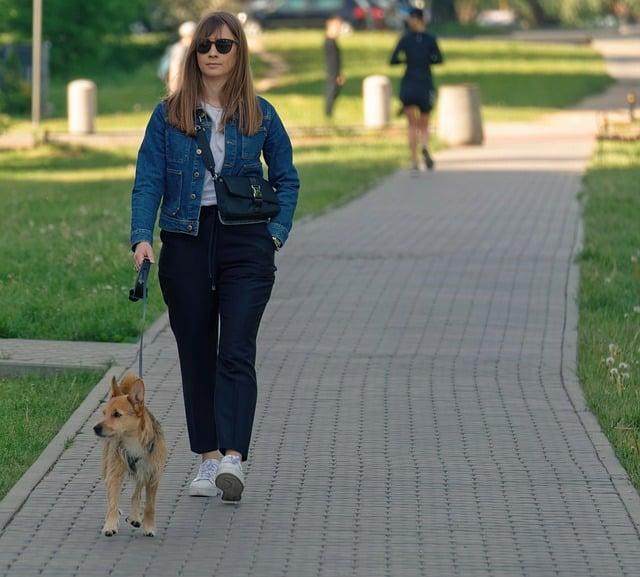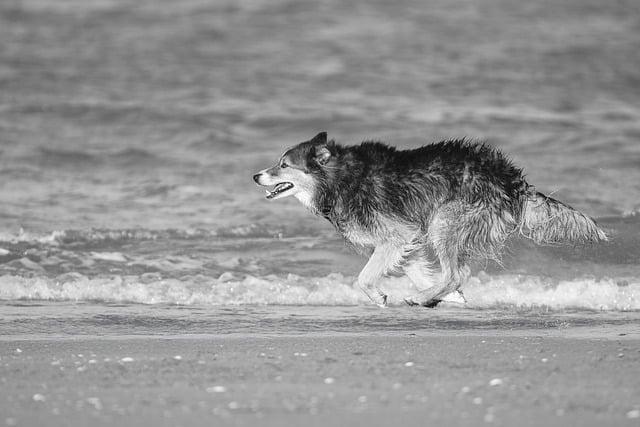Imagine coming home after a long day, and as you open the door, a wagging tail and bright eyes greet you. Your dog rushes to you, tail thumping against the floor, as if to say, “I’ve missed you!” This joyful reception is just one sign of a strong bond. When your dog follows you from room to room, seeks your attention, or brings you their favorite toy, it’s clear they trust and cherish your companionship. These behaviors indicate a deep connection, proving that love and loyalty run strong in the canine heart.
Contents
- Understanding Canine Body Language as a Key Indicator of Bonding
- Recognizing Behavioral Changes that Signal Affection and Trust
- The Importance of Consistent Interaction in Strengthening Your Relationship
- Building a Lasting Connection Through Positive Reinforcement Techniques
- Q&A
Understanding Canine Body Language as a Key Indicator of Bonding
Understanding your dog’s body language is essential in recognizing the depth of your bond. Dogs communicate primarily through their physical expressions, and being attuned to these signals can reveal their feelings towards you. When a dog feels a strong connection, you may notice their body language becoming more relaxed and open. Look for signs such as a wagging tail held at a neutral position, soft eyes, and a relaxed posture. These indicators suggest that your dog feels safe and secure in your presence.
Another key aspect of canine body language is the way they seek proximity to you. Dogs that have formed a bond will often follow you around the house, lean against you, or even rest their head on your lap. This behavior signifies trust and affection. Additionally, if your dog engages in playful behaviors, such as bringing you toys or initiating games, it’s a clear sign that they enjoy your company and want to strengthen your relationship.
Vocalizations can also play a role in understanding your dog’s feelings. While barking can indicate various emotions, softer sounds like whines or gentle growls can express excitement or a desire for attention. Pay attention to the context in which these sounds occur; if your dog vocalizes when you arrive home or during playtime, it indicates a strong emotional connection. Furthermore, a dog that frequently looks to you for cues or guidance demonstrates their reliance on you as a leader and companion.
Lastly, consider the importance of eye contact in the canine world. A dog that gazes at you with soft eyes is often expressing love and trust. This kind of eye contact can release oxytocin, the bonding hormone, in both you and your dog, further solidifying your relationship. Conversely, if your dog avoids eye contact or displays signs of stress, it may indicate discomfort or insecurity. By being mindful of these subtle cues, you can foster a deeper understanding of your dog’s emotions and enhance the bond you share.
Recognizing Behavioral Changes that Signal Affection and Trust
When a dog forms a bond with you, their behavior often shifts in subtle yet significant ways. One of the most telling signs is their eagerness to be near you. If your dog follows you from room to room, it’s a clear indication that they feel secure in your presence. This instinctual behavior stems from their pack mentality, where being close to their trusted companions brings comfort and safety.
Another key indicator of affection is the way your dog communicates with you. Dogs express their feelings through body language, and a relaxed posture can signal trust. Look for signs such as:
- Soft eyes and a relaxed mouth
- A wagging tail held at a neutral position
- Leaning against you or resting their head on your lap
These behaviors demonstrate that your dog feels at ease and enjoys your company, reinforcing the bond you share.
Additionally, dogs often display their affection through playful behavior. If your dog initiates playtime, brings you their favorite toy, or engages in a game of fetch, it’s a sign they see you as a trusted partner. Play is not only a way for dogs to expend energy but also a means of strengthening their connection with you. Their willingness to engage in these activities indicates a deep-seated trust and affection.
Lastly, consider how your dog reacts to your emotions. A dog that has bonded with you will often mirror your feelings, showing concern when you’re upset or excited when you’re happy. This empathetic behavior is a strong indicator of their attachment. If your dog seeks to comfort you during tough times or celebrates with you during joyful moments, it’s a clear sign that they have formed a meaningful connection based on affection and trust.
The Importance of Consistent Interaction in Strengthening Your Relationship
Building a strong bond with your dog requires more than just feeding and walking them; it thrives on consistent interaction. Engaging with your dog regularly fosters trust and understanding, which are essential components of a healthy relationship. When you dedicate time to play, train, or simply relax together, you create a safe space where your dog feels valued and secure. This consistent presence not only enhances your dog’s emotional well-being but also strengthens the connection you share.
One of the most telling signs of a strong bond is your dog’s willingness to seek your company. If your dog follows you around the house, sits close to you, or chooses to rest by your side, it indicates a deep-seated trust and affection. These behaviors reflect a desire for companionship and a need for reassurance, showcasing that your dog feels safe in your presence. By being attentive to these cues, you can further nurture this bond through regular interaction and affection.
Moreover, consistent interaction allows for effective communication between you and your dog. Dogs are incredibly perceptive and can pick up on your emotions and body language. When you engage with them through training sessions or playtime, you not only teach them commands but also reinforce your role as a leader and a source of comfort. This two-way communication enhances their ability to understand your expectations and respond positively, which in turn fosters a deeper connection.
Lastly, the joy of shared experiences cannot be overstated. Whether it’s a daily walk, a game of fetch, or simply cuddling on the couch, these moments create lasting memories that solidify your bond. Dogs thrive on routine and familiarity, so incorporating consistent activities into your daily life will help reinforce their attachment to you. By prioritizing these interactions, you are not just a caretaker; you become a beloved companion, enriching both your lives in the process.
Building a Lasting Connection Through Positive Reinforcement Techniques
Establishing a strong bond with your dog is essential for a harmonious relationship, and positive reinforcement techniques play a pivotal role in this process. When you consistently reward your dog for good behavior, you not only encourage them to repeat those behaviors but also foster a sense of trust and security. This method creates an environment where your dog feels valued and understood, paving the way for a deeper emotional connection.
One of the most telling signs that your dog has bonded with you is their eagerness to engage in activities together. Whether it’s playing fetch, going for walks, or simply lounging on the couch, a dog that seeks your company demonstrates a strong attachment. **Look for behaviors such as:**
- Bringing toys to you for playtime
- Following you around the house
- Excitedly greeting you when you come home
Another indicator of a solid bond is your dog’s responsiveness to your cues and commands. A dog that has formed a connection with you will be more likely to listen and react positively to your instructions. This responsiveness not only showcases their trust in your leadership but also highlights the effectiveness of positive reinforcement in shaping their behavior. **Key signs include:**
- Quickly responding to their name
- Following commands without hesitation
- Seeking your approval before acting
the way your dog expresses affection can reveal the depth of your bond. Dogs often show their love through physical touch and proximity. If your dog enjoys cuddling, leans against you, or seeks out your lap, these behaviors are strong indicators of a lasting connection. **Pay attention to these affectionate gestures:**
- Gentle nudges with their nose
- Resting their head on your lap
- Looking into your eyes with a relaxed expression
Q&A
-
Does your dog seek your company?
If your dog consistently follows you around the house, it’s a strong indicator of bonding. Dogs that feel connected will want to be near you, showing their trust and affection.
-
How does your dog react to your presence?
Pay attention to your dog’s body language. A wagging tail, relaxed posture, and excited greetings when you come home are signs that your dog feels secure and happy in your presence.
-
Does your dog engage in play with you?
Dogs that bond with their owners often initiate playtime. If your dog brings you toys or engages in games, it’s a clear sign that they enjoy your company and want to strengthen your relationship.
-
How does your dog respond to your commands?
A dog that has bonded with you is more likely to respond positively to your commands. This willingness to listen and obey shows trust and respect, key components of a strong bond.
recognizing the signs of a strong bond with your dog is essential for fostering a lasting relationship. By understanding their behaviors and emotions, you can nurture this connection, ensuring a happier and healthier life for both you and your furry companion.

大家好,我是彼得潘,專業的手法身體治療師。我喜歡探索和研究各種主題,並透過與人工智慧的合作分享專業、實用、有趣的文章。我們定期進行人工審核,以確保內容的準確性。如果您發現文章中有任何不準確的地方,請隨時與我們聯繫,我們會及時糾正。您可以透過 [email protected] 與我們聯繫。



